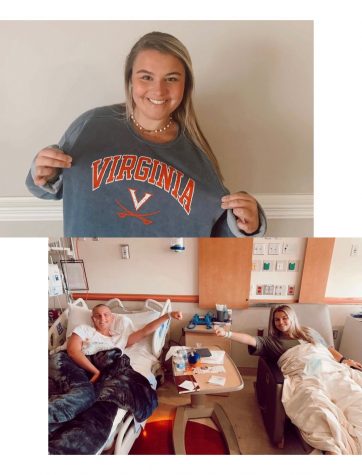There Is Always Another Option
“I can’t do this anymore.” This phrase spans the minds of 75% of people everyday who are suffering from suicidal thoughts. According to the American Foundation for Suicide Prevention for every successful suicide, there are 25 people who attempted but were unsuccessful. Suicide takes the lives of 44,193 people each year, averaging around 121 suicides per day. This starting statistic makes suicide the 10th leading cause of death in the United states.
There is no one cause to suicide. Suicide is often connected to a sea of problems. The most common cause is depression, but that is just the tip of the iceberg. Suicide is linked to other mental illnesses such as: abusive relationships, substance abuse, family history, incarceration and so much more. Mental illness makes significant changes to thinking, emotion or behavior, altering a person’s chemical mindset.
Speaking of statistics, race and age play a large role as well. The highest rate of suicide in the category of age is between 45 and 64 years old. The second highest is 85 and older. The lowest rate, which is the most surprising, is between the ages of 15 and 24. Suicide among people who are Caucasian and Native American was higher than those who are African American or Asian.
People who are suffering from depression sometimes don’t take the route of suicide and instead turn to self-harm. According to the American Foundation for Suicide Prevention, there are “494,169 people [who] visited a hospital for injuries due to self-harm”. In other words, on the average 1 in every 12 people who have harmed themselves have committed suicide.
These people are using self-harm as a way to cope from the feelings they have, but how should they cope? Mr. Angilly suggested that people should lean toward more productive and less destructive coping mechanisms such as, “writing stories or writing about your feelings” and especially not “turning to drugs and alcohol”. Unfortunately, many people who are suffering from suicide turn to escapes, like drugs and alcohol. According to Elements Behavioral Health, people who abuse substances are six times as likely to commit suicide than those who do not. Just as Mr. Angilly said, people should find any other way to express their feelings, instead of internalizing and releasing through substances.
Ultimately, there is one powerful way to solve the problem of suicide: communication.
There needs to be more communication between schools and their students. Most adults shy away from talking about touchy subjects like suicide because they are afraid of negative repercussions. Mrs. Smith stated that “there is a stigma of fear about putting the thought into [students] heads.” Unfortunately there is nothing from stopping someone from googling suicide, or getting the idea elsewhere. So communication and awareness in schools would cause a major positive impact with suicide.
There needs to be more communication between parents and children. So many kids feel that opening up to their parents is not the way to go, but that’s wrong. Being able to talk to someone, even parents, could ultimately save lives.
Lastly there needs to be more communication as a society. Today all it takes is a click of a button or a tap of a key to alter someone’s life for worse. We can save the girl who is getting “slut shamed” on twitter, the boy whose dad is hitting him at home, the girls who can’t stomach food because people are calling them “fat”. As a society we should be discussing more about how words really do hurt more than actions, how one opinionated comment, one mean tweet, one “funny” picture, could shatter someone’s emotions causing them want to take their own life.
Overall, suicide is a topic that should never be deflected. As a CHC community together we can make a difference. So many precious, meaningful lives could be saved everyday. As a community, we should reach out to everyone and promote a feeling of inclusivity. All this can be done by communicating, educating, and making others aware that suicide is a permanent solution to temporary problems.

Kiara Baxter, Class of 2020, always has her nose in a book. Not only does she enjoy reading stories, she also enjoys writing them. Journalism is a way...
